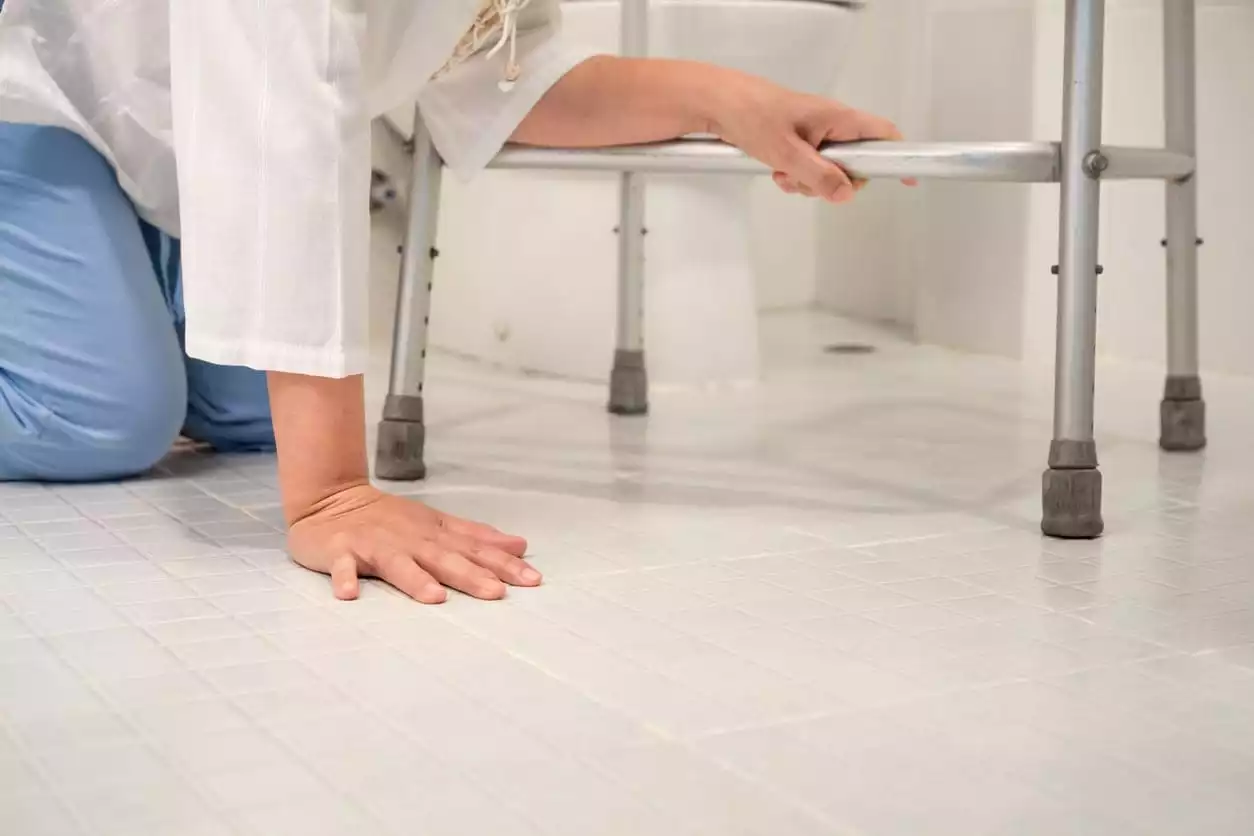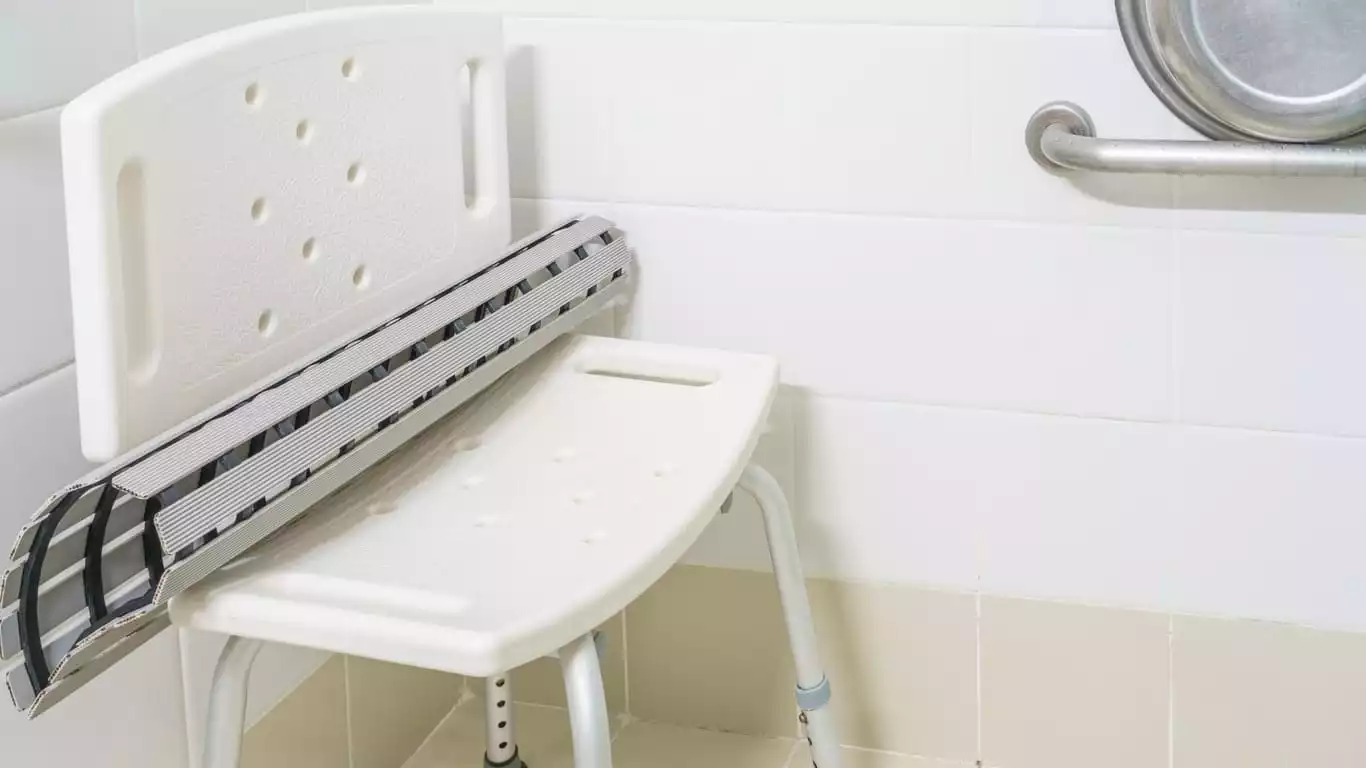
These 9 types of bathroom safety equipment for seniors reduce potential falls to keep your loved ones safe and healthy as they age.
Your body changes as you age. This includes changes to your heart and circulatory systems which can leave you feeling short of breath, weak, and even, sometimes, dizzy or unsteady.
Add to this the fact that mobility issues dull the reflexes and the risk for an accident rises sharply.
This is especially true in the bathroom, where seniors are moving in smaller spaces and the odds of slipping and falling are a lot higher.
9 Types of Bathroom Safety Equipment for Seniors
One in four Americans over the age of 65 falls each year, with 80% of those falls occurring in the bathroom.
With such staggering numbers, it’s essential to provide bathroom safety equipment for seniors who are at a high fall risk in the bathroom.
So what can you do to make the bathroom a safer place?
There are quite a few choices and options when it comes to bathroom safety equipment for seniors.
We strongly recommend bathroom safety equipment in all homes (not just homes with seniors).
1. Grab Bars
Grab bars are especially helpful in homes with a traditional bathtub/shower combination.
Stepping over the side of the tub can become increasingly difficult, especially for people with balance or joint issues.
Many find themselves stretching to awkward angles to hold onto
- Walls
- Counters
- Faucets
None of which are safe or conducive to bathroom safety.
Having grab bars installed at different heights and angles ensures a safe grip and strong support. While some grab bars can be mounted to the side of the tub, others can be permanently attached to the wall.
The key is to make sure you have them installed properly so that they are properly mounted through the drywall behind your tiles.
Talk to a professional handyman or contractor if you aren’t sure how to do this.
2. Grip Tape
While not “equipment,” per say, grip tape is a must-have in any senior household.
You can wrap this tape on the grab bars you already have to create a rougher surface that is easier to hold onto.
This is especially important if your loved one doesn’t have a lot of hand strength and may lose their grip on the bar while stepping in or out of the shower.
3. Shower Chairs
Some seniors have trouble standing for long periods of time, whether from musculoskeletal disorders, illness, or from medications.
The heat of the shower or bath can also make a person feel lightheaded or dizzy from time to time. That said, there’s still nothing quite as comforting or soothing as a shower.
Shower chairs, sometimes referred to as transfer benches, can make that coveted time safer and more comfortable.
- Some sit right in the tub or shower area, so you can step in and sit down.
- Others extend further out of the tub, making it easy for you to sit down and then safely swing your legs into the tub area.
4. Handheld Shower Heads
Installing an adjustable, handheld shower head can be especially helpful to seniors who need to sit in the shower.
They can pull the head off of the base and pull it closer to them rather than sitting under a steady stream they can’t reach to adjust.
This tool will prevent your loved one from attempting to stand up multiple times during the washing process, reducing the risk of a fall.
Handheld shower heads are great for people who can stand in the shower, too.
They make it possible for seniors to rinse and wash without having to spin and maneuver, which can be a serious catalyst for falls in the bathroom.
5. Raised Toilet Seats
Patients with mobility issues, especially impacting the knees and hips, may have trouble lowering themselves onto a standard-sized toilet seat.
Getting up again can also be an issue, forcing a person to throw their upper body weight forward and use momentum instead of their legs — a dangerous move that could increase the odds of a fall.
Raised toilet seats add anywhere from 2 inches to 4 inches to a toilet’s seat level height, which can significantly reduce pressure on joints.
Choose from options with or without side handles for additional assistance.
6. Bath Mats
Bath mats are especially important for preventing slips and falls in the shower or tub (no matter what your age).
The mat you choose should have strong suction on the bottom (or even a glue-in surface) so it doesn’t
- Move
- Slide
- Adjust
The biggest complaint about mats and stick-on grip products is that they usually get a little moldy or lose traction and become slippery.
One alternative is an anti-slip bathtub coating. You roll it on like paint and it gives the bottom of the tub a rough, non-slip surface, creating more traction and stability while taking a bath.
7. Night Lights
Seniors are more likely to become disoriented in the dark, making a late-night trip to the bathroom especially dangerous.
You can combat this issue by adding LED night lights to the hall and bathroom areas, providing additional assistance until they get to the light switch.
Recessed lighting along the edge of the wall where it meets the floor works particularly well for lighting a path, but even lamps or night lights serve a purpose.
8. Commodes
If your loved one has trouble getting in and out of the bathroom, consider bringing it to them.
You can place a commode just about anywhere in the privacy of your home.
Keep it in the bedroom so your loved one doesn’t have to get up or transfer to the bathroom, or in any space that gives you more room to maneuver as you work to assist them with their personal hygiene needs.
Commodes can also be utilized as a nighttime failsafe alone, giving patients who struggle with incontinence a closer option.
9. Commode Transfer Bench
Is it difficult to maneuver in your bathroom?
A transfer bench with a commode opening can work in two ways.
It can extend the bench area over your regular toilet to make it easier to slide off and on, or it can be used with a commode bucket for placement wherever is most convenient.
Conclusion
Safety should be your number one priority in the bathroom, no matter what your age.
The older we are, the more difficult it can be to recover, making it especially important for seniors to avoid slip and fall accidents.
Bathroom safety equipment for seniors greatly reduces these risks and can help keep your loved ones safe.
Even those who have just been ill or have an injury can benefit from enhanced safety mechanisms.
The correct bathroom safety equipment for seniors will depend on your loved one’s unique and individual medical conditions and needs, but there are dozens of options.
Talk to your doctor, physical therapist, or occupational therapist if you aren’t sure what your loved one may need to have in the house. They’ll make sure you’re on the right track.

 info@burtsrx.com
info@burtsrx.com

